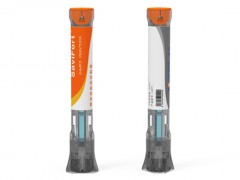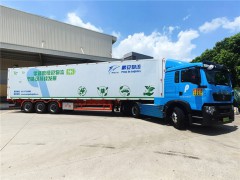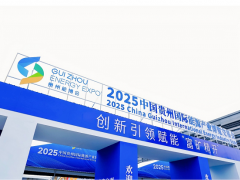據(jù)海上工程師網(wǎng)報(bào)道,在美國馬薩諸塞州和紐約州海岸,開發(fā)商正準(zhǔn)備建造美國第一個(gè)政府批準(zhǔn)規(guī)模的海上風(fēng)力發(fā)電場(chǎng)——總共74個(gè)渦輪機(jī),可為47萬戶家庭供電。美國 東海岸還有10多個(gè)其他海上風(fēng)力發(fā)電項(xiàng)目正等待批準(zhǔn)。
美國政府的目標(biāo)是到2030年前擁有30吉瓦的海上風(fēng)電,足夠?yàn)?000萬戶家庭供電。
用風(fēng)電等清潔能源取代化石燃料為基礎(chǔ)的能源,對(duì)于阻止氣候變化導(dǎo)致的日益惡化的影響至關(guān)重要。 但這種轉(zhuǎn)變的速度還不足以阻止全球氣候變暖。 人類活動(dòng)向大氣中排放了如此多的二氧化碳,我們也必須將二氧化碳從大氣中去除,并將其永久封存起來。
海上風(fēng)力發(fā)電場(chǎng)具有這種獨(dú)特的優(yōu)勢(shì),既能做到這兩點(diǎn),又能省錢。
美國大西洋沿岸的可再生能源租賃區(qū)大多位于大西洋中部各州和馬薩諸塞州附近。 紐約灣大約48萬英畝的土地計(jì)劃在今年2月拍賣,用于建造風(fēng)力發(fā)電場(chǎng)。
作為海洋地球物理學(xué)專家,研究者一直在探索將風(fēng)力渦輪機(jī)與直接從大氣中捕獲二氧化碳并將其儲(chǔ)存在海底天然儲(chǔ)層中的技術(shù)相結(jié)合的可能性。 這些技術(shù)結(jié)合起來,可以降低碳捕獲的能源成本,最大限度地減少對(duì)陸上管道的需求以及減少對(duì)環(huán)境的影響。
從大氣中直接捕獲二氧化碳
一些研究小組和科技初創(chuàng)公司正在測(cè)試直接從大氣中捕捉二氧化碳的設(shè)備,這種設(shè)備可以直接從大氣中吸收二氧化碳。 這項(xiàng)技術(shù)是可行的,但到目前為止,早期的項(xiàng)目都是代價(jià)昂貴且是能源密集性的項(xiàng)目。
這個(gè)系統(tǒng)使用過濾器或液體溶液,從吹過的空氣中捕獲二氧化碳。 一旦過濾器滿了,就需要電力和熱量來釋放二氧化碳,并重新啟動(dòng)捕獲循環(huán)。
為了實(shí)現(xiàn)凈負(fù)排放,電源必須是無碳的。
目前,世界上最大的主動(dòng)直接空氣捕獲廠通過利用廢熱和可再生能源來實(shí)現(xiàn)這一目標(biāo)。 然后,位于冰島的這種工廠將捕獲的二氧化碳泵入底層的玄武巖中,在那里,二氧化碳與玄武巖發(fā)生反應(yīng)并鈣化,變成固體礦物。
類似的過程也可以用海上風(fēng)力渦輪機(jī)實(shí)現(xiàn)。
如果直接空氣捕獲系統(tǒng)與海上風(fēng)力渦輪機(jī)一起建造,它們將從過剩的風(fēng)力發(fā)電中獲得直接的清潔電力,并可以將捕獲的二氧化碳直接泵送到海底下儲(chǔ)存,從而減少對(duì)大規(guī)模管道系統(tǒng)的需求。
瑞士的Climeworks公司擁有15個(gè)空氣直捕工廠,將二氧化碳從大氣中去除。
研究人員目前正在研究這些系統(tǒng)在海上條件下是如何工作的。 空氣直接捕獲技術(shù)在陸地上的應(yīng)用才剛剛開始,而且這項(xiàng)技術(shù)可能還需要進(jìn)行改進(jìn),以適應(yīng)惡劣的海上環(huán)境。 但現(xiàn)在就應(yīng)該開始規(guī)劃,這樣風(fēng)電項(xiàng)目就能充分利用碳儲(chǔ)存地點(diǎn),并在設(shè)計(jì)上實(shí)現(xiàn)平臺(tái)、海底基礎(chǔ)設(shè)施和電纜網(wǎng)絡(luò)的共享。
合理利用過剩風(fēng)電
從本質(zhì)上講,風(fēng)電是間歇性的。 對(duì)風(fēng)電的需求也各不相同。 當(dāng)風(fēng)能產(chǎn)生的電力超過需求時(shí),風(fēng)電產(chǎn)量就會(huì)減少,本可以使用的電力就會(huì)損失。
這些未使用的電力可以用來去除大氣中的二氧化碳,并將其封存起來。
例如,美國紐約州的目標(biāo)是到2035年前擁有9吉瓦的海上風(fēng)力發(fā)電。 預(yù)計(jì)這9吉瓦發(fā)電能力每年將提供27.5太瓦時(shí)的電力。
根據(jù)美國歷史上的風(fēng)縮減率,隨著海上風(fēng)力發(fā)電場(chǎng)的擴(kuò)大,預(yù)計(jì)每年將有825兆瓦時(shí)的電力過剩。 假設(shè)空氣直接捕獲的效率繼續(xù)提高并達(dá)到商業(yè)目標(biāo),這些過剩的電力每年可用于捕獲和儲(chǔ)存50萬噸以上的二氧化碳。
如果系統(tǒng)不利用剩余電力,那么這些剩余電力就會(huì)被浪費(fèi)掉。 如果系統(tǒng)使用更多的風(fēng)電,其碳捕獲和儲(chǔ)存潛力將會(huì)增加。
一些租借給海上風(fēng)力發(fā)電場(chǎng)的大西洋中部地區(qū)也有在海底儲(chǔ)存二氧化碳的潛力。 這種能力是以每平方公里排放數(shù)百萬噸二氧化碳為單位來衡量的。 美國每年從能源中產(chǎn)生大約45億噸二氧化碳。
政府間氣候變化專門委員會(huì)預(yù)測(cè),為了將全球氣候變暖控制在與工業(yè)化前水平相比的1.5攝氏度(2.7華氏度)以內(nèi),在本世紀(jì)內(nèi)必須從大氣中去除1000至10000億噸二氧化碳。
據(jù)研究人員估計(jì),在美國東海岸計(jì)劃進(jìn)行的海上風(fēng)力開發(fā)項(xiàng)目附近的海底地質(zhì)構(gòu)造具有儲(chǔ)存超過5000億噸二氧化碳的能力。 玄武巖有可能也存在于這一地區(qū)的一系列地下盆地中,這將增加更多的儲(chǔ)存能力,并使二氧化碳與玄武巖反應(yīng),隨著時(shí)間的推移而固化,盡管地質(zhì)調(diào)查還沒有測(cè)試這些沉積物。
同時(shí)計(jì)劃捕獲和儲(chǔ)存可以節(jié)省時(shí)間和成本
用空氣直接捕獲技術(shù)建造的新風(fēng)電場(chǎng)可以向電網(wǎng)交付可再生電力,并為碳捕獲和儲(chǔ)存提供多余的電力,從而優(yōu)化這一大規(guī)模投資,以獲得直接氣候效益。
但這需要在建設(shè)之前就做好規(guī)劃。 同時(shí)啟動(dòng)風(fēng)電和儲(chǔ)存的海上地球物理調(diào)查、環(huán)境監(jiān)測(cè)要求和審批流程,可以節(jié)省時(shí)間,避免沖突,改善環(huán)境管理工作。
李峻 編譯自 海上工程師網(wǎng)
原文如下:
Offshore Wind Farms Could Help Capture Carbon from Air and Store It Long-term
Off the Massachusetts and New York coasts, developers are preparing to build the United States’ first federally approvedutility-scale offshore wind farms – 74 turbines in all that could power 470,000 homes. More than a dozen other offshore wind projects are awaiting approval along the Eastern Seaboard.
By 2030, the Administration’s goal is to have 30 gigawatts of offshore wind energy flowing, enough to power more than 10 million homes.
Replacing fossil fuel-based energy with clean energy like wind power is essential to holding off the worsening effects of climate change. But that transition isn’t happening fast enough to stop global warming. Human activities have pumped so much carbon dioxide into the atmosphere that we will also have to remove carbon dioxide from the air and lock it away permanently.
Offshore wind farms are uniquely positioned to do both – and save money.
Most renewable energy lease areas off the Atlantic Coast are near the Mid-Atlantic states and Massachusetts. about 480,000 acres of the New York Bight is scheduled to be auctioned for wind farms in February 2022.
As a marine geophysicist, I have been exploring the potential for pairing wind turbines with technology that captures carbon dioxide directly from the air and stores it in natural reservoirs under the ocean. Built together, these technologies could reduce the energy costs of carbon capture and minimize the need for onshore pipelines, reducing impacts on the environment.
Capturing CO2 from the air
Several research groups and tech startups are testing direct air capture devices that can pull carbon dioxide directly from the atmosphere. The technology works, but the early projects so far are expensive and energy intensive.
The systems use filters or liquid solutions that capture CO2 from air blown across them. once the filters are full, electricity and heat are needed to release the carbon dioxide and restart the capture cycle.
For the process to achieve net negative emissions, the energy source must be carbon-free.
The world’s largest active direct air capture plant operating today does this by using waste heat and renewable energy. The plant, in Iceland, then pumps its captured carbon dioxide into the underlying basalt rock, where the CO2 reacts with the basalt and calcifies, turning to solid mineral.
A similar process could be created with offshore wind turbines.
If direct air capture systems were built alongside offshore wind turbines, they would have an immediate source of clean energy from excess wind power and could pipe captured carbon dioxide directly to storage beneath the sea floor below, reducing the need for extensive pipeline systems.
Climeworks, a Swiss company, has 15 direct air capture plants removing carbon dioxide from the air. Climeworks
Researchers are currently studying how these systems function under marine conditions. Direct air capture is only beginning to be deployed on land, and the technology likely would have to be modified for the harsh ocean environment. But planning should start now so wind power projects are positioned to take advantage of carbon storage sites and designed so the platforms, sub-sea infrastructure and cabled networks can be shared.
Using excess wind power when it isn’t needed
By nature, wind energy is intermittent. Demand for energy also varies. When the wind can produce more power than is needed, production is curtailed and electricity that could be used is lost.
That unused power could instead be used to remove carbon from the air and lock it away.
For example, New York State’s goal is to have 9 gigawatts of offshore wind power by 2035. Those 9 gigawatts would be expected to deliver 27.5 terawatt-hours of electricity per year.
based on historical wind curtailment rates in the U.S., a surplus of 825 megawatt-hours of electrical energy per year may be expected as offshore wind farms expand to meet this goal. Assuming direct air capture’s efficiency continues to improve and reaches commercial targets, this surplus energy could be used to capture and store upwards of 0.5 million tons of CO2 per year.
That’s if the system only used surplus energy that would have gone to waste. If it used more wind power, its carbon capture and storage potential would increase.
Several Mid-Atlantic areas being leased for offshore wind farms also have potential for carbon storage beneath the seafloor. The capacity is measured in millions of metric tons of CO2 per square kilometer. The U.S. produces about 4.5 billion metric tons of CO2 from energy per year. U.S. Department of Energy and Battelle
The Intergovernmental Panel on Climate Change has projected that 100 to 1,000 gigatons of carbon dioxide will have to be removed from the atmosphere over the century to keep global warming under 1.5 degrees Celsius (2.7 Fahrenheit) compared to pre-industrial levels.
Researchers have estimated that sub-seafloor geological formations adjacent to the offshore wind developments planned on the U.S. East Coast have the capacity to store more than 500 gigatons of CO2. Basalt rocks are likely to exist in a string of buried basins across this area too, adding even more storage capacity and enabling CO2 to react with the basalt and solidify over time, though geotechnical surveys have not yet tested these deposits.
Planning both at once saves time and cost
New wind farms built with direct air capture could deliver renewable power to the grid and provide surplus power for carbon capture and storage, optimizing this massive investment for a direct climate benefit.
But it will require planning that starts well in advance of construction. Launching the marine geophysical surveys, environmental monitoring requirements and approval processes for both wind power and storage together can save time, avoid conflicts and improve environmental stewardship.
免責(zé)聲明:本網(wǎng)轉(zhuǎn)載自其它媒體的文章,目的在于弘揚(yáng)石化精神,傳遞更多石化信息,并不代表本網(wǎng)贊同其觀點(diǎn)和對(duì)其真實(shí)性負(fù)責(zé),在此我們謹(jǐn)向原作者和原媒體致以敬意。如果您認(rèn)為本站文章侵犯了您的版權(quán),請(qǐng)與我們聯(lián)系,我們將第一時(shí)間刪除。







